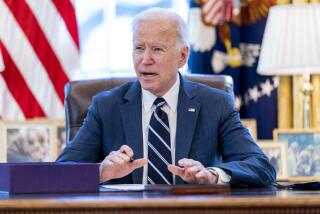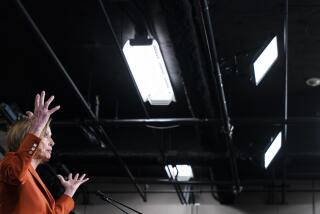Stimulus checks are coming. How much will you get and when?
President Trump signed a $2.3-trillion spending bill Sunday â despite his own late objections â that funds the government and includes $900 billion in stimulus provisions for struggling households and businesses.
The measure comes amid sky-high COVID-19 cases and deaths and is meant to support the economy as the COVID-19 vaccine rollout continues.
The new law provides a variety of economic boosts, including expanded unemployment benefits, rental aid and forgivable loans to small businesses. The government is also sending checks directly to many Americans.
Fernando Lozano, an economist at Pomona College, said Congress should pass additional relief given the scale of the crisis, but called the bill a âsmall step in the right direction.â
âItâs certainly better than nothing,â he said.
When will I get my check?
As with the previous round of coronavirus stimulus checks under the CARES Act, you are likely to see the money quickly if the IRS has your direct deposit information on file.
Treasury Secretary Steven T. Mnuchin posted on Twitter on Tuesday that âpayments may begin to arrive in some accounts by direct deposit as early as tonight and will continue into next week.â
He said that paper checks would go out by mail starting Wednesday, and people will soon be able to check the status of their payment on the IRS website.
How much will I get? Who is eligible for the checks?
In this round, people who file their tax returns individually and have adjusted gross income of up to $75,000 will get $600, with the amount gradually reduced for individuals who earn more.
For joint filers, the ceiling for a full payment is $150,000 of adjusted gross income: They will receive $1,200 ($600 per adult). For an individual filing as head of household, the ceiling is $112,500. Families will receive up to $600 per adult and $600 more for each dependent child under 17 years old.
As in the spring, the benefits phase out for those with higher income at the rate of $50 for each $1,000 above the ceiling. That means single filers with adjusted gross income of $87,000 or more will get no stimulus money. Joint filers with adjusted gross income of $174,000 or more are also not eligible for checks. (The phaseouts are reached sooner than with the earlier stimulus checks, which phased out completely at $99,000 for singles and $198,000 for couples.)
Why wasnât the bill quickly signed into law?
A day after Congress overwhelmingly approved the package on Dec. 21, President Trump called the measure a âdisgraceâ and, among other requests, called on Congress to increase checks from $600 to $2,000.
The presidentâs announcement came even as Treasury Secretary Mnuchin was negotiating on the administrationâs behalf and told lawmakers the president intended to sign it.
After days of criticizing the bill, the president opted against vetoing the measure and signed it into law Sunday night.
Are $2,000 checks still possible?
Democrats have supported $2,000 checks, but congressional Republicans have blocked previous efforts to increase the size of payments. The issue has become divisive among Republicans this time around, with a growing number of Republican senators supporting larger checks.
The Democratic-controlled House voted Monday to boost payments to $2,000, but such a change would also need to clear the GOP-controlled Senate. Senate Majority Leader Mitch McConnell (R-Ky.) on Tuesday blocked efforts to bring an immediate vote to increase the stimulus checks, leaving the measure in limbo for now.
Lozano, the Pomona College economist, said he viewed ultimate approval of $2,000 checks as unlikely but said more help is needed. He urged Congress to âerr on the side of generosity rather than the side of frugality.â
More to Read
Inside the business of entertainment
The Wide Shot brings you news, analysis and insights on everything from streaming wars to production â and what it all means for the future.
You may occasionally receive promotional content from the Los Angeles Times.











